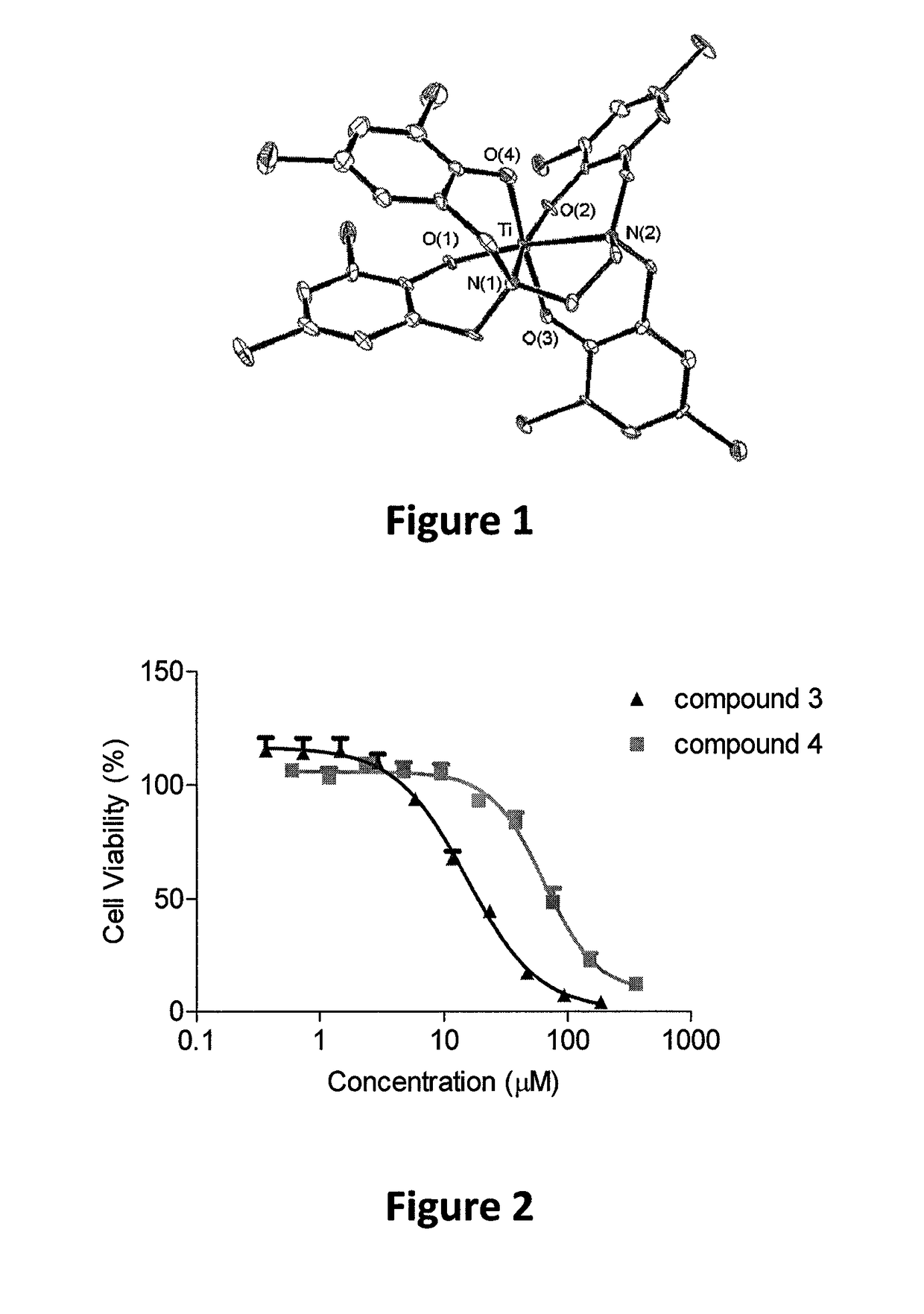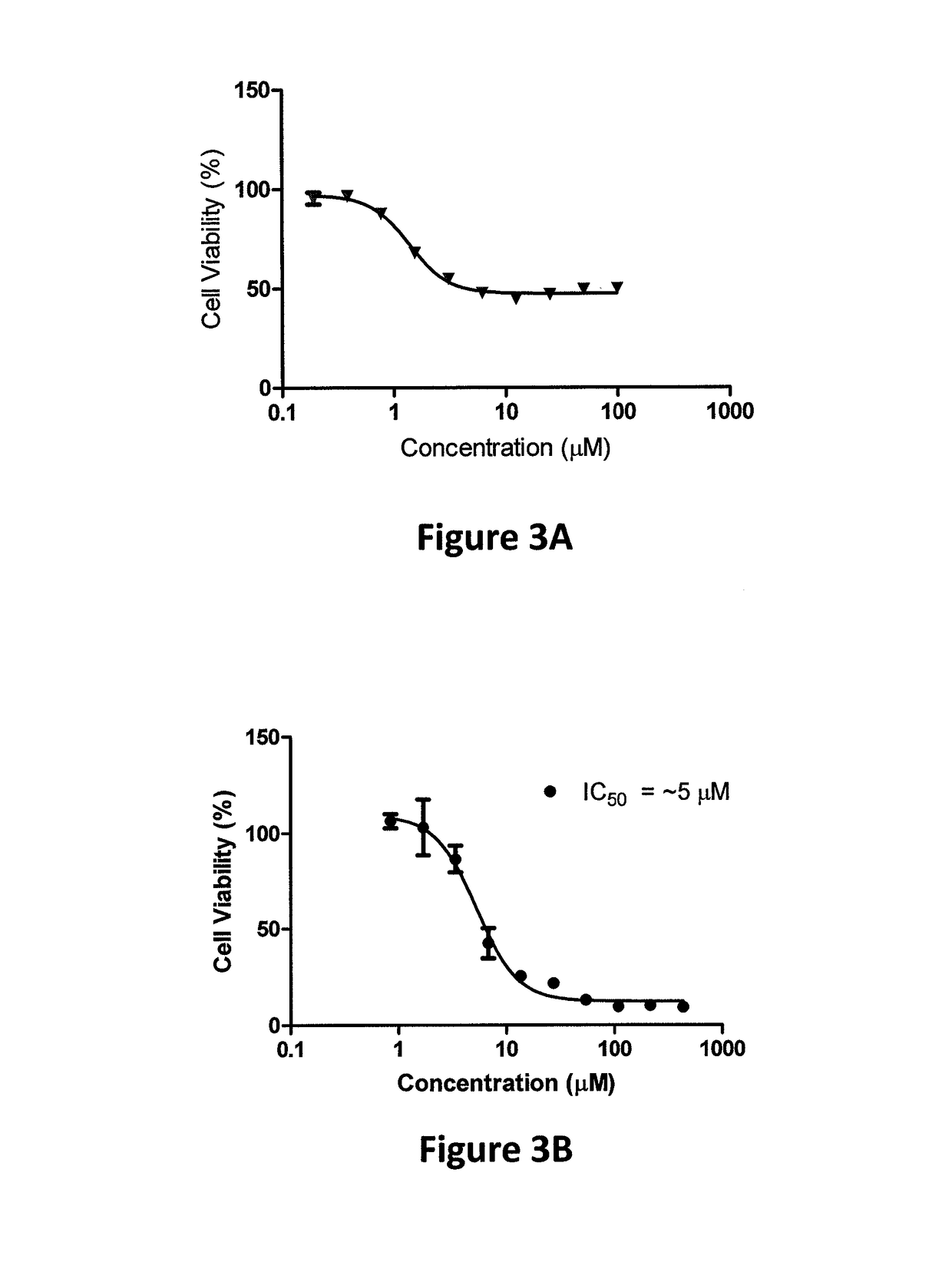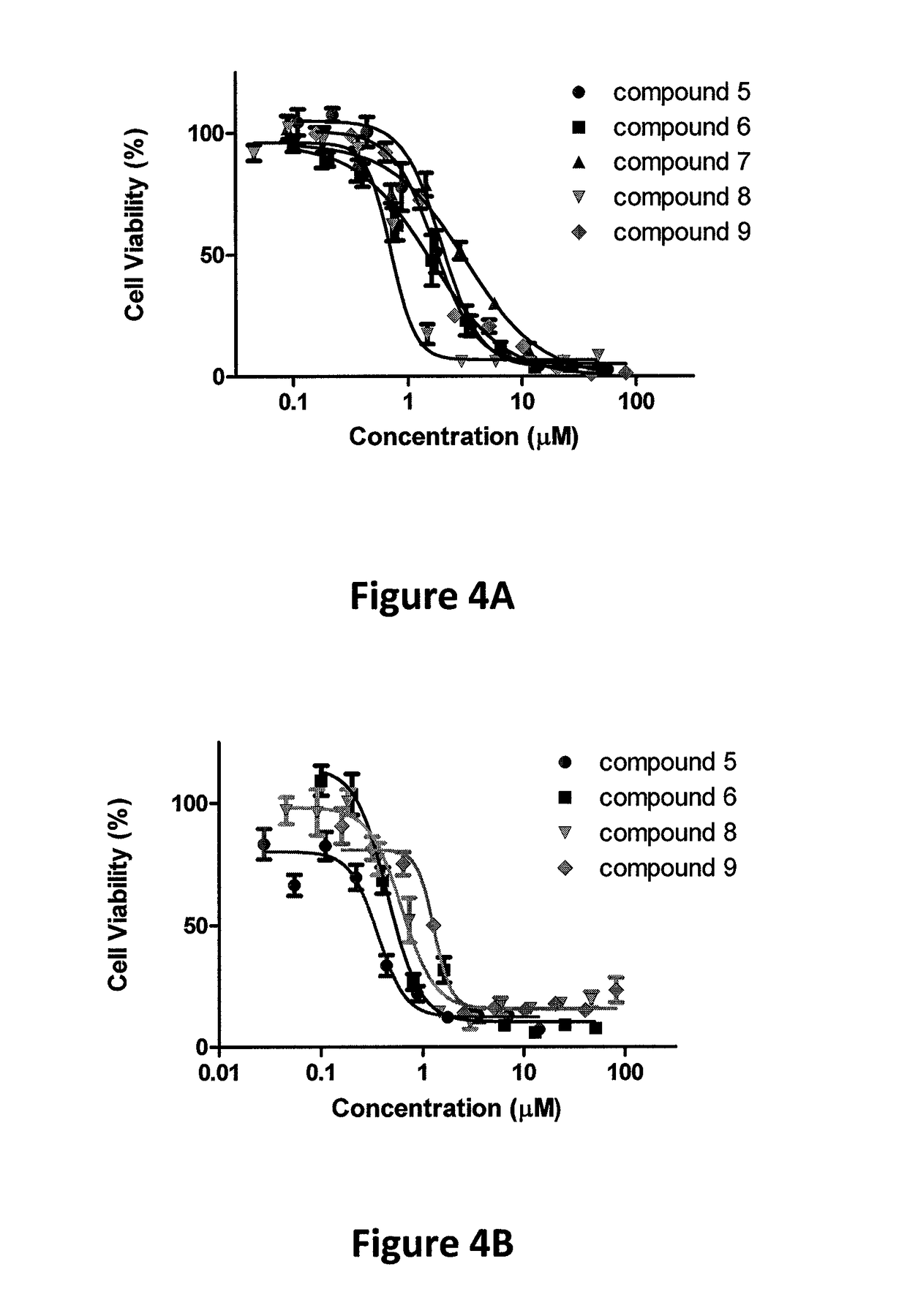Cytotoxic titanium and vanadium complexes
a vanadium complex and titanium technology, applied in the field of compounds, compositions and nanoparticles, can solve the problems of complexes containing two labile ligands, limited by aquatic instability, and unresolved mechanistic aspects, etc., and achieve the effects of rich aqueous chemistry, low stability and high stability
- Summary
- Abstract
- Description
- Claims
- Application Information
AI Technical Summary
Benefits of technology
Problems solved by technology
Method used
Image
Examples
Embodiment Construction
[0371]As noted hereinabove, titanium(IV) based anticancer complexes were the first to enter clinical trials following platinum compounds, demonstrating high antitumor activity toward a range of cancer cells with reduced toxicity. The recently introduced cytotoxic bis(alkoxo)salan TiIV complexes had been determined to be: (a) substantially more hydrolytically stable than known TiIV complexes; and (b) markedly more active than (bzac)2Ti(OiPr)2, Cp2TiCl2, and cis-platin toward variety of cancer-derived cell lines. Nevertheless, these complexes ultimately hydrolyzed to release the labile alkoxo ligands in the biological environment to give polynuclear products. These products although were inactive when administered directly, surprisingly showed high cytotoxicity when formulated into nano-particles.
[0372]Vanadium complexes have also previously been shown to lead to cytotoxic compounds. Vanadium(V) complexes based on salan ligands with a labile alkoxo group showed high cytotoxicity but l...
PUM
| Property | Measurement | Unit |
|---|---|---|
| diameter | aaaaa | aaaaa |
| diameter | aaaaa | aaaaa |
| size | aaaaa | aaaaa |
Abstract
Description
Claims
Application Information
 Login to View More
Login to View More - R&D
- Intellectual Property
- Life Sciences
- Materials
- Tech Scout
- Unparalleled Data Quality
- Higher Quality Content
- 60% Fewer Hallucinations
Browse by: Latest US Patents, China's latest patents, Technical Efficacy Thesaurus, Application Domain, Technology Topic, Popular Technical Reports.
© 2025 PatSnap. All rights reserved.Legal|Privacy policy|Modern Slavery Act Transparency Statement|Sitemap|About US| Contact US: help@patsnap.com



